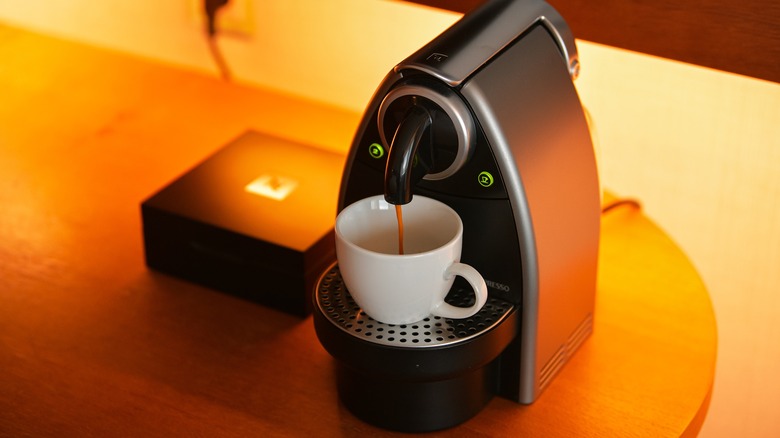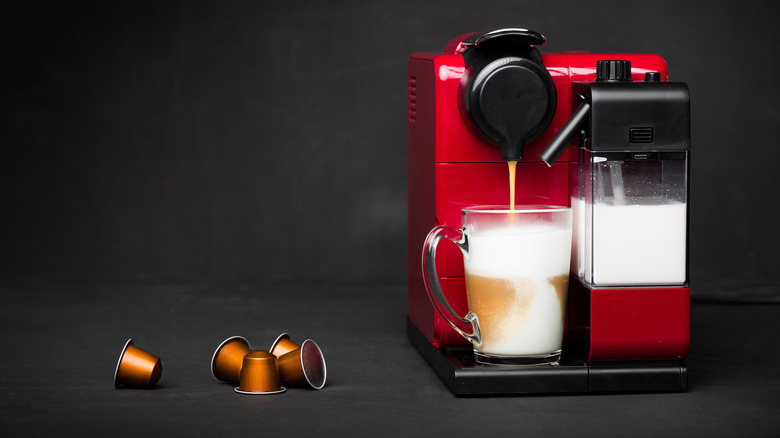Cleaning Your Nespresso Machine Takes 2 Key Steps
Sure, you can make coffee without a machine, but a Nespresso machine is perhaps the closest you'll come to replicating a cafe-style shot of espresso at home with minimal effort. Simply turn the machine on, and a hot stream of java will pour into your cup at the touch of a button. However, to ensure your Nespresso machine continues to function as your personal barista, regular maintenance is required; otherwise, you might find yourself stuck with less-than-perfect espresso.
Depending on the type of Nespresso machine you own, you should disassemble its various parts — such as water tanks, capsule containers, and any built-in milk tanks — and rinse or wipe them down. Exposure to water can lead to mineral build-up, which may negatively affect the temperature and flow of your espresso, as well as its flavor. This can turn what should be a smooth and silky shot into something burnt and bitter. Therefore, Nespresso recommends descaling your machine every six to 12 months with a descaling solution.
Clean your machine regularly
The first step to keeping your Nespresso machine in top shape is regular cleaning. Dusting the exterior regularly is a no-brainer, but you should also disassemble and clean the interior components, ideally every time you refill the water tank or empty the capsule container. Start by removing the water tank and gently rinsing it with soap and water. It's best to use a non-abrasive sponge and clean these parts by hand, rather than using a dishwasher. The capsule container, drip trays, and cup shelves can all be cleaned in the same manner, while the capsule head can simply be wiped with a damp cloth.
If your machine has a steam wand, be sure to wipe off any leftover milk stains from the exterior and purge the wand after each use. Built-in milk containers should also be cleaned after every use, and machines that use a "Rapid Cappuccino System" — such as the Lattissima series — need to be disassembled after each use, too. Their parts can either be washed by hand or placed on the upper shelf of a dishwasher.
Once all the parts are washed and dried, fill the water tank, reattach it to the machine, and place an empty jar capable of holding up to four cups of water beneath it. Press the start button three times in intervals no longer than two seconds each, and let the water cycle run three times to flush out any lingering debris inside the machine.
Descale your machine
Nespresso machines don't need to be descaled as frequently as they need to be cleaned, but you should still descale them around every six to 12 months or after brewing 300 capsules — whichever comes first. While most machines require you to fill the water tank with a diluted descaling solution and run several cycles, it's best to consult your specific Nespresso model's instruction manual for the exact descaling process. The manual will also specify the sequence of buttons to press to enter and exit descaling mode.
One option is the descaling solution sold by Nespresso for $8.95 in two-packs. If that's not an option, you can also dissolve one tablespoon of citric acid powder in the water tank as a DIY solution and follow the same descaling steps. However, never use white vinegar to clean or descale your Nespresso. The acetic acid in white vinegar can cause significant internal damage to the machine, potentially leading to leaks. As long as you clean and descale your coffee machine regularly with the appropriate solutions, your Nespresso will continue to produce excellent cups of coffee for years to come!



